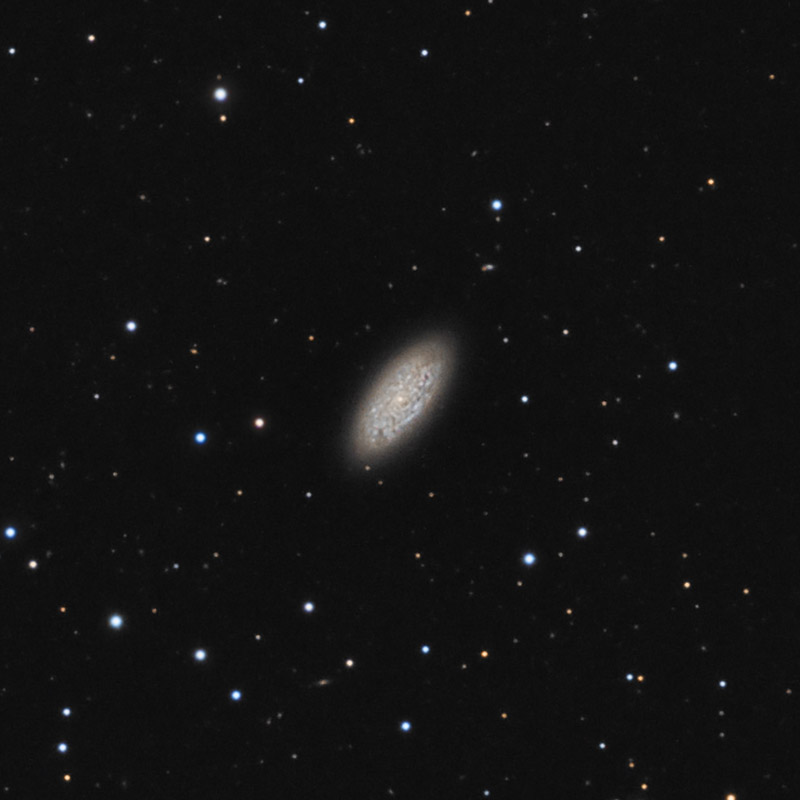| Description | Images |
Object name: NGC5949Designation(s): NGC5949, NGC 5949 is a very flocculent galaxy in Draco just under Ursa Minor. Redshift puts it only 21 million light-years distant. However, the redshift value is rather unreliable at such close range due to the galaxies own motions likely being greater and thus swamping the cosmological measurement. Various Tully-Fisher measurements cover a rather large range from 33 million to 63 million light-years. The most modern estimates are coming in at about 45 to 50 million light-years which pretty well matches the resolution of its features in my image. I'll go with the lower end and say 45 million light-years. That makes this little feller about 30,000 light-years in diameter. NED classifies it as SA(r)bc? though how you find spiral arms in all those segments I don't know. The NGC project says more simply Sc and Seligman says Sbc. The galaxy was discovered on November 28, 1801 by, who else, William Herschel. It isn't to be found in either of the Herschel 400 lists. So why did I take it? I like flocculent galaxies and this one is so flocculent I see no hint of a spiral pattern in the so-called arm segments. Some of these are HII regions according to notes at NED but they indicate these regions are faint so I didn't try the H alpha filter on them even though this is one of the rare galaxies with a low enough redshift the emission is within my 6nm wide passband. Related Designation(s):11HUGS 386, 2MASS J15280065+6445475, 2MASX J15280067+6445473, 2MASXi J1528005+644551, 2MIG 2112, CGCG 1527.4+6455, CGCG 319-016, IRAS 15273+6456, IRAS F15273+6456, KIG 0682, MCG +11-19-008, NGC 5949, NGC5949, NSA 146181, NVSS J152759+644539, PGC 055165, SDSS J152800.67+644547.5, SSTSL2 J152800.69+644547.3, UGC 09866, UZC J152800.7+644547, |

